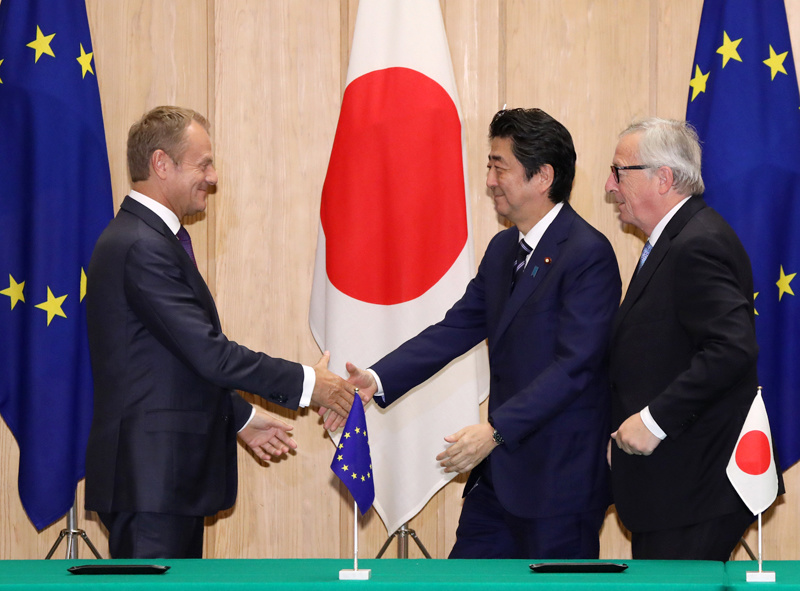Brussels, Belgium – The Free Trade Agreement (FTA) between the European Union (EU) and Japan, which came into effect on February 1, 2019, has significantly impacted trade relations and economic cooperation between the two major economies. The agreement aims to reduce trade barriers, enhance market access, and foster closer economic ties, bringing both opportunities and challenges for businesses and policymakers.
Economic Boost and Market Access
The EU-Japan FTA has created one of the world’s largest open trade zones, covering nearly one-third of global GDP. This has led to a substantial boost in trade and investment flows between the EU and Japan. By eliminating tariffs on a wide range of products, the FTA has made it easier for businesses in both regions to access each other’s markets.
European exporters, particularly in the agricultural sector, have benefited from the agreement. The FTA has removed tariffs on over 90% of EU agricultural products, including cheese, wine, and pork, making them more competitive in the Japanese market. Conversely, Japanese manufacturers have gained improved access to the European market, particularly for automotive and electronic products. This mutual access is expected to increase the variety and reduce the cost of goods available to consumers in both regions.
Advantages for Small and Medium-Sized Enterprises (SMEs)
The FTA also provides significant advantages for SMEs in both the EU and Japan. By simplifying customs procedures and reducing bureaucratic hurdles, the agreement has made it easier for smaller businesses to enter and compete in new markets. This has opened up new growth opportunities for SMEs, allowing them to expand their customer base and increase revenue.
Enhanced Regulatory Cooperation
Another critical aspect of the FTA is the focus on regulatory cooperation and the removal of non-tariff barriers. This includes aligning standards and regulations in various sectors, such as automotive, electronics, and pharmaceuticals. By reducing these regulatory discrepancies, the FTA has made it easier for companies to sell products in both markets without facing additional compliance costs. This regulatory alignment also enhances product safety and consumer protection, fostering greater trust in traded goods.
Environmental and Sustainability Benefits
The EU-Japan FTA goes beyond traditional trade issues to address environmental and sustainability concerns. Both parties have committed to upholding international environmental and labor standards. The agreement includes provisions to promote sustainable development, such as measures to combat climate change and promote the use of renewable energy. This focus on sustainability is crucial for ensuring that economic growth does not come at the expense of the environment.
Challenges and Adjustments
Despite the numerous benefits, the EU-Japan FTA also presents certain challenges. For instance, some industries may face increased competition, which could impact local businesses that are not as competitive on an international scale. To mitigate these challenges, both the EU and Japan are implementing support measures to help industries adapt to the new competitive landscape. This includes providing financial assistance, training programs, and other resources to help businesses improve their competitiveness and innovation capabilities.
Future Prospects
Looking ahead, the EU and Japan are committed to further strengthening their trade and economic relations. The FTA serves as a foundation for deeper cooperation in areas such as digital trade, cybersecurity, and data protection. Both parties are also exploring opportunities to collaborate on global issues, such as sustainable development and climate change, leveraging their economic partnership to drive positive change.
The EU-Japan FTA has brought significant benefits to both regions, fostering economic growth, enhancing market access, and promoting regulatory cooperation. While challenges remain, the agreement represents a major step forward in international trade relations, setting a benchmark for future trade agreements. By continuing to build on this partnership, the EU and Japan are well-positioned to navigate the complexities of the global economy and achieve sustainable development goals.

 简体中文
简体中文 English
English Tiếng Việt
Tiếng Việt हिन्दी
हिन्दी Español
Español